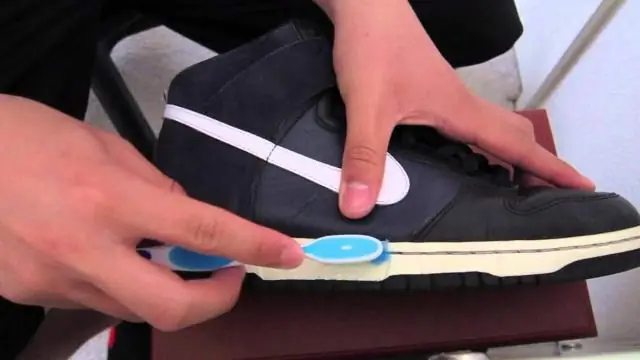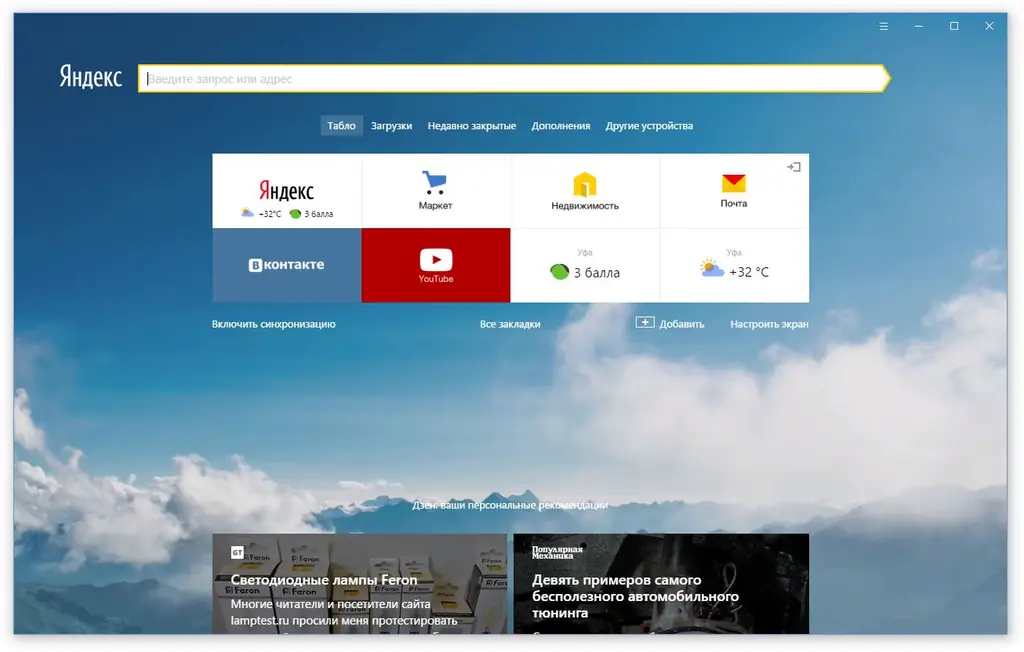
Table of contents:
- Author Bailey Albertson [email protected].
- Public 2023-12-17 12:53.
- Last modified 2025-01-23 12:41.
How to view passwords in different browsers and, if necessary, remove them from programs

All browsers have a built-in function for saving passwords from accounts on sites. In addition, in the settings of the "surfing" utility, the user can then look at the logins and passwords that were saved, if, for example, he forgot the combination. How to open a list with passwords and, if necessary, remove unnecessary ones?
Content
-
1 How to view saved passwords in browsers
- 1.1 In Yandex Browser
-
1.2 In Opera
1.2.1 Video: How to Find Stored Security Keys in Opera
-
1.3 On Google Chrome
1.3.1 Video: How to View Passwords in Google Chrome
- 1.4 In Mozilla Firefox
-
2 How to delete passwords saved in the browser: all or some specific
-
2.1 Browser from "Yandex"
2.1.1 Video: clearing passwords in Yandex Browser
- 2.2 "Opera"
-
2.3 "Google Chrome"
2.3.1 Video: Remove Passwords in Google Chrome
- 2.4 Mozilla Firefox
-
How to view saved passwords in browsers
Let's describe how to get to the password block in the most popular browsers.
In Yandex Browser
Let's start with a utility from the domestic company Yandex:
-
Expand the panel with the internal sections of the browser - click on the three lines at the top right. We press immediately on the line "Password Manager".

Yandex. Browser menu Go to the section with passwords in the Yandex Browser menu
-
We get into the block "Password and Forms". The first tab will contain a list of all logins from the "accounts" that you previously saved.

List of passwords "Yandex Browser" Select an account from the list in the first tab
- Press the left mouse button on the required account - a dialog box will appear.
-
To see the combination that is hidden behind the dots, click on the eye icon on the right side of the line.

Show password Click on "Show password" in the window
- We repeat the same steps for each "account", the key from which you want to find out.
In Opera
In Opera, you need to go to the following sections:
-
Click on the "Opera" icon at the top left - click on the settings (they can also be opened using the P + Alt combination).

Operas menu Go to the section with the "Opera" settings
-
Expand the "Advanced" panel on the left and come to the menu with forms and passwords. Let's click on the third item.

Advanced menu In the additional menu, open the "Passwords" section
-
A list of site keys will appear. If it's too large, use the search bar at the top. To open the combination, click on the familiar eye icon.

List of passwords in "Opera" To view the password in the "Opera" click on the icon on the right side of the line
Video: How to Find Stored Security Keys in Opera
In Google Chrome
Now let's take a browser from Google:
-
To the right of the navigation bar for site addresses is an icon with three dots - click on it and click on the third item from the bottom for the section with settings.

Chroma menu In the "Chrome" menu, select the "Settings" item
-
Go to the first block "Passwords" in the section with parameters for autocomplete.

Autocomplete In the "Autocomplete" click on the "Passwords" menu
-
Here, almost everything is the same as in Opera: we click on the pupil on the right to look at the key combination for a specific account.

List of passwords in "Chrome" Click on the eye icon to find out the password
Video: How to View Passwords in Google Chrome
In Mozilla Firefox
If you have "fox", you can see the password as follows:
-
Expand the menu through the hamburger icon at the top right - click on the item with the gear.

Settings in Mozilla Go to the "Mozilla" settings
-
Go to the tab for setting up protection and privacy.

Privacy and protection Scroll down the Privacy & Security page
-
In the block with parameters for logins and passwords, click on the second button "Saved Logins".

Saved logins Click on the button "Saved logins"
-
A list of "accounts" will appear in the dialog box. Using the line with a magnifying glass at the top, you can quickly find the desired site.

List of passwords in "Mozilla" The list of passwords will be displayed in the dialog box
-
Highlight the account and click on "Show passwords". Confirm the action.

Configuring the display of passwords Agree to display passwords
-
Right-clicking on the item brings up a menu with which you can copy the login data.

Item context menu Through the context menu of the item, you can copy the login information and the site address
How to delete passwords saved in the browser: all or some specific
If there is extra data in the list, feel free to delete it - you only need to complete a couple of steps.
Browser from "Yandex"
Removal proceeds as follows:
-
If you want to remove all the keys at once, click on the heading of the first column - all "records" will receive marks at once.

Highlighted items If you click on the heading "Site", all lines will be highlighted
-
If you only need to get rid of combinations for specific accounts, manually mark the necessary items.

Manual selection If you do not want to delete all passwords, select each item that you want to delete yourself.
- In the lower left corner of the page, click on the "Delete" link.
- A notification pops up at the bottom about how many passwords have been removed. If you removed the wrong keys, you can restore them immediately. But if you reload the page, the "backup" option will disappear.
-
You can delete the data for authorization in another way: open the settings and go to the "System" section. There click on the link "Clear history".

System tab Go to Browser Cleanup in the System Tab
-
Select from the menu to clear the data accumulated over the entire period of using the utility. Check the box for form autocomplete data. Start cleaning and wait for it to finish.

Clearing history Clear form autofill data
Video: clearing passwords in Yandex Browser
Opera
In Opera, the cleanup is also pretty simple:
-
In the section with the list of passwords, combinations can be removed only individually - you cannot select all the items. Therefore, we select an account and click on three dots on the same line.

Other actions Click on the icon with three dots on the right
-
In other actions, click on the delete option.

Remove password Confirm deletion in the small menu
- A black dialog box will indicate a successful cleanup. Clicking on the white "Cancel" button will help you quickly restore authorization data if you have deleted them by mistake.
-
If you want to remove all passwords at once: in the "Additional" menu, open the "Clear browsing history" panel.

Section "Additional" in "Opera" In advanced settings, run browser cleanup
-
In the "Advanced" tab, select the item with passwords and data for automatic filling. Start the process.

Clearing Opera History Clear browser passwords in the dialog box
Google Chrome
The procedure will be similar to the previous one:
-
We select from the list the "account" with a login and security key and click on the icon at the right end of the line.

Item "Delete" Click on "Delete" in the item menu
- We start cleaning.
-
As a result, we see a notification below - cancel it if necessary.

Remote password After deletion, a message will appear below about the completed procedure
-
You can remove passwords in one fell swoop in this way: go to advanced browser settings.

Additional menu Open the "Advanced" menu
-
Click on the menu to clear history.

Item "Clear history" Run the section to clear the browser from "garbage"
-
Go to the tab with additional items. Check "Passwords and other login details" and "Autofill data".

Delete data button Highlight the "Passwords" item and click on "Delete data"
-
Select "All the time" from the drop-down menu and clear history.

Time range Set the time range "All time"
Video: Remove Passwords in Google Chrome
Mozilla Firefox
Mozilla will need to confirm deletion already:
- Select several or all accounts with the left key.
-
Click on "Delete All". Confirm the action.

Password deletion confirmation Agree to remove your password
- If you want to delete only one, left-click and click on "Delete".
-
Another way to uninstall is through the Browser Cleanup Wizard: go to the Privacy and Security section. Click on "Delete history".

Delete history button Click on "Delete history"
-
Select "All Time".

Delete recent history Choose to clear the data accumulated over the entire time of using the program
-
Mark site data as well as form log. Start cleaning.

Deleting data Delete all data and form history
You can find out the saved combinations of keys from accounts, and then, if necessary, delete them directly in the browser interface. Finding a section is not difficult. Usually, the title includes the words "autocomplete", "forms", "protection", "security" and others. You can delete all keys at once or selectively separate combinations. The first case is more suitable for a complete cleaning of the browser, if you are not going to use this browser or the PC in general anymore.
Recommended:
How To Bleach The Soles Of Sneakers, Clean Them On Sneakers Or Other Shoes, Wash Them To White Using Various Methods + Photos And Videos

Shoes with white soles (sneakers, sneakers, etc.) - how to clean them quickly and easily. How to preserve the result after cleaning and protect it from dirt
How To Clear Cache And Junk On IPhone, Options For How To Delete Documents And Data, And Free Up Memory On IPhone

Where does the system junk on the iPhone come from? Methods of its "cleaning": deleting the cache, full reset, cleaning the RAM. Removing unnecessary files manually
How To Update The Opera Browser For Free - Why And When Is It Done, Check The Existing Version Of Opera, Put A New One, Carry Out The Settings

Why you need to install updates in Opera. How to do this if auto-update did not work, and also how to roll back the browser to a previous version
How To View Deleted History In Yandex Browser, Is It Possible To Recover It And How, What To Do So That This Data Is Not Saved When You Exit

How to view history in Yandex Browser. How to partially or completely remove it. How to recover erased history or prevent its recording
What To Do If Car Mirrors Freeze, Including The Rear View, How To Process Them And How To Warm Them

How to process a car mirror from ice and snow crust: special means and folk methods. How to keep the mirror from freezing. Photo. Video. Reviews
